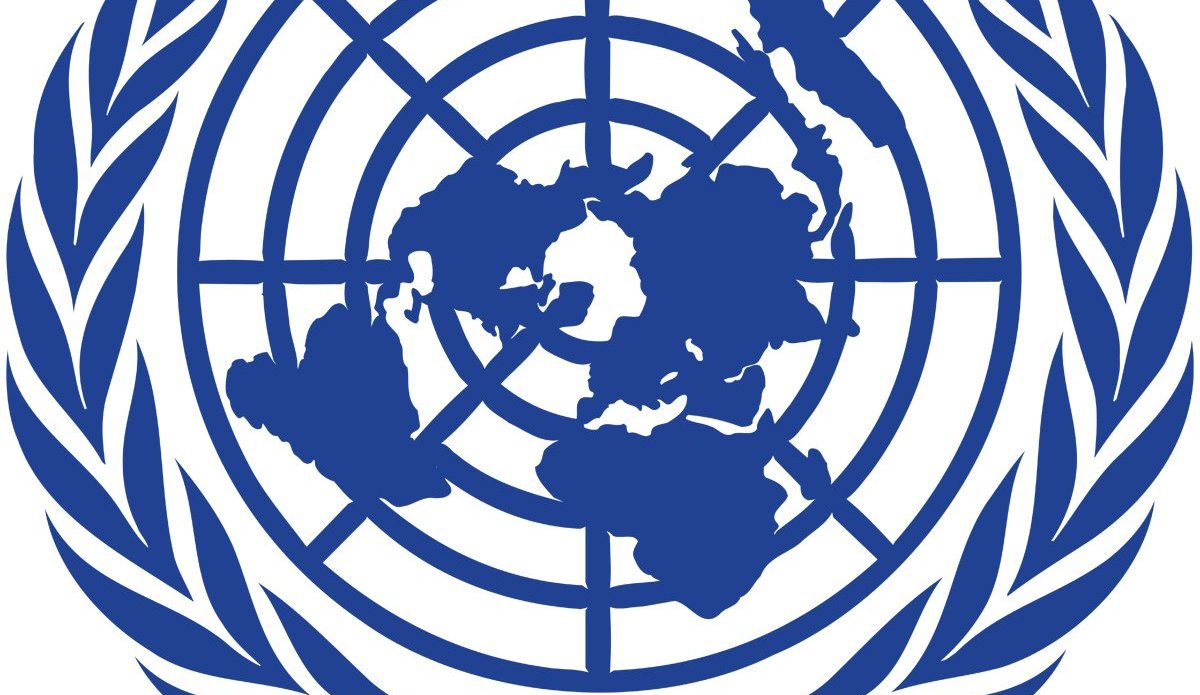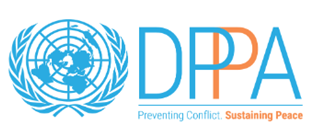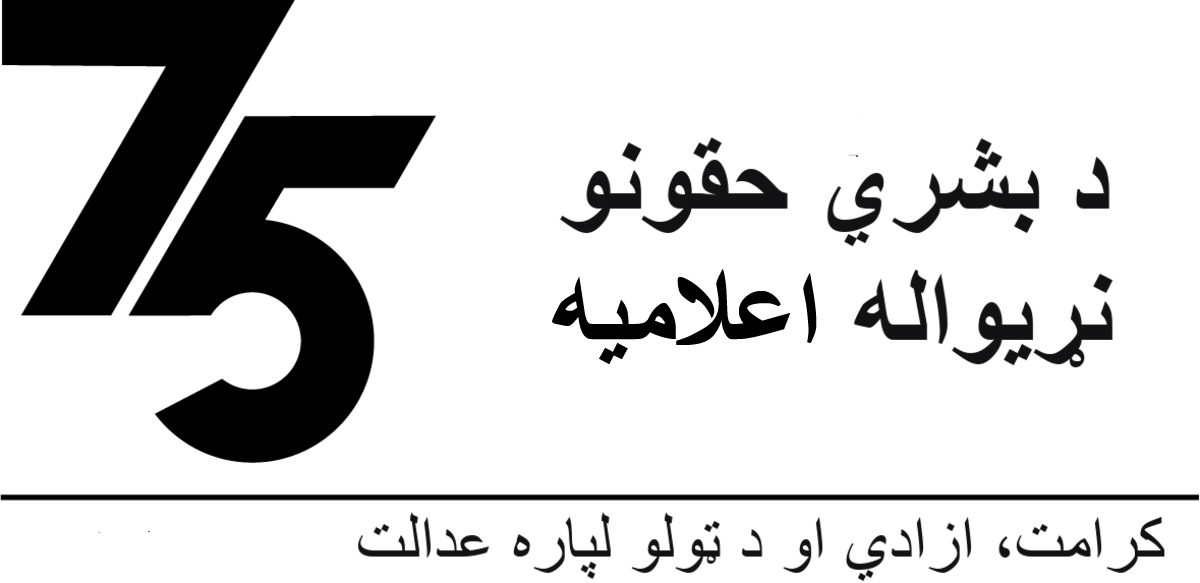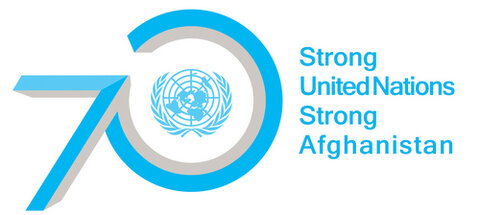Transcript of press conference on Mid Year Report on Protection of Civlians (July 2014)
KABUL - Below is the near verbatim transcript of the press conference given on the occasion of the launch of the Mid-Year Report on the Protection of Civilians in Armed Conflict in Afghanistan.
TRANSCRIPT
Press Conference for Launch of UNAMA’s 2014 Mid-Year Report on Protection of Civilians in Armed Conflict
(near verbatim; edited for clarity)
Kabul – Wednesday, 9 July 2014
Participants:
- UNAMA Human Rights Director Georgette Gagnon
- UNAMA National Spokesperson Nazif Salarzai
Nazif Salarzai: Good morning everyone. We have here today for the launch of UNAMA’s latest Mid-Year Report on the Protection of Civilians in Armed Conflict, the Director of the Mission’s Human Rights unit, Georgette Gagnon. Without further ado, I’ll turn over to her to get us started.
Georgette Gagnon: Good morning, thank you for coming today. We know that lots of things are going on here in Afghanistan at the moment and we appreciate your continuing attention to the situation of civilians in the armed conflict, which continues even in the midst of these current political developments.
Today, UNAMA is releasing its Mid-Year Report on the Protection of Civilians. It details how the conflict has affected thousands of Afghans in their everyday lives over the first six months of this year – from January to the end of June, just few weeks ago.
The report documents incidents of civilian casualties, what tactics killed civilians and which party was responsible. It also includes regional breakdowns and analysis, and recommends real measures that the warring parties should take to prevent and reduce civilian deaths and injuries from conflict because that is the aim and the goal of our efforts and should be the goal of all of the conflict’s parties.
The conflict in Afghanistan took an even more dangerous turn for civilians in the first half of this year. Civilian casualties increased by 24 per cent – compared to the first half of 2013. The UN documented 4,853 civilian casualties, that is 1,564 deaths, civilians killed, and 3,289 civilians injured for a 24 per cent increase overall.
For the first time, and this is a new trend, ground engagement or ground fighting among the parties to the conflict is now the leading cause of civilian casualties, up 89 per cent from 2013, and killing and injuring 1,901 civilians and accounting for 39 per cent of all civilian casualties, these were from ground engagements in the first half of this year.
In previous years, IEDs – improvised explosive devices – were the biggest killer of civilians and this changed in this first six months of 2014. We also found that women and children casualties rose to unprecedented levels. Child casualties increased 34 per cent overall with about 1,071 killed and injured.
Women civilian casualties also increased by 24 per cent, with 440 killed and injured.
Ground engagements – this is the use of mortars, RPG, small arms fire, crossfire – also killed the most women and children in the first half of this year, and also killed and injured the most civilians overall.
It is important to highlight though that IEDs, which were the second leading cause of civilian casualties over this past six months, caused 30 per cent of all civilian casualties; and 1,463 civilian were killed and injured from IEDs. We are particularly concerned about the resurgence of the use of pressure plate victim-activated illegal IEDs and also the placing of IEDs in places where civilians go, such as parks, markets and public roads.
Suicide and complex attacks were the third leading cause of civilian casualties.
UNAMA attributed, overall, 74 per cent of civilian casualties to Anti-Government Elements; nine per cent to Pro-Government Forces, and that included eight per cent to Afghan national security forces; one per cent to international military forces; 12 per cent of all civilian casualties to ground engagements in which a particular civilian casualty could not be attributed to a specific party so we said it was the responsibility of both parties; and, overall, four per cent of civilian casualties were mainly due to explosive remnants of war.
In the first half of this year, the Taliban publicly claimed responsibility for 147 attacks which resulted in 553 civilian casualties. UNAMA found that many of these attacks, while aimed at military targets, indiscriminately harmed civilians. A number of other attacks, numerous other attacks, deliberately targeted civilian objectives such as attacks against tribal elders, civilian Government employees and civilians in restaurants.
We highlight that attacks which do not distinguish between a military and civilian objective, and attacks that deliberately target civilians, are serious violations of international humanitarian law and may amount to war crimes. All parties, including the Taliban, the anti-government elements and the other forces, are obliged to abide by international humanitarian law.
In 2014, we found that the fight is increasingly taking place in communities, in public places near playgrounds, near the homes of ordinary Afghans, with death and injury, particularly to women and children, in a continued disturbing upward spiral.
More efforts are needed for civilians, to ensure accountability for those who deliberately indiscriminately kill them for the remaining months of 2014. We are urging the parties to attempt to make efforts to reverse this downward spiral and to cease firing mortars, rockets and grenades into civilian areas, to stop using IEDs, putting them in places indiscriminately, and to stop using illegal IEDs. It is very important to highlight that every civilian casualty has a life behind it, and the report has many accounts of those who have had relatives killed and injured.
Again, we would urge you to read the report which has a lot of very good information in it, including the accounts of the Afghan civilians and how the war is affecting them.
Thank you.
QUESTIONS AND ANSWERS
Rose News Agency: A special thanks for your crying over the civilian deaths while you delivering the report. The question that I want to know: is there any long-term programme for those injured… is there any long-term programme for them by the UN or other international organizations working on this at all?
Georgette Gagnon: We understand that those families who have deaths or who have injuries, depending on the parties responsible, make a claim with the Government, with international forces, if they are responsible. Also, we understand that there are some other agencies that maybe providing these. But the UN is not involved in providing compensation. That is not our job. Our job is to document and report on civilian casualties, advocate and, of course, help civilians to the right organizations to get compensation.
Ariana TV News: UNAMA is always making recommendations in its reports. How much are your recommendations accepted or taken [seriously] by the parties, especially ISAF [International Security Assistance Forces] and the Afghan Government.
Georgette Gagnon: The great majority of the recommendations over the years have been taken onboard by ISAF and also by the Afghan forces. They have put in place new tactical directives, procedures, and rules of engagement with civilian protection at the very top, the main aim. And we have seen over the years a reduction of civilian casualties. That happened as a result of the actions of the Afghan or international forces, in particular the international forces.
We have more work to do with the Afghan forces as they are now running the war, and we are working with them very closely to see that they take all necessary measure to reduce civilian casualties. But if you look at the data, the casualties caused by the Government forces are very low compared to the casualties caused by insurgents.
National Public Radio: You have seen an increase in civilian casualties as the international forces drawdown means they are much less engaged in operations. Can you explain some of the relationship, how the drawdown is affecting things, what is happening in terms of civilian casualties… ?
Georgette Gagnon: We have analysed why there are more civilian casualties from ground engagements over the past six months, and we come up with few points. First, there are shifting conflict dynamics in the country. We have found that where there is ground combat, overall, attacks or fighting between parties to the conflict, these increasingly took place in civilian-populated area. For example, closer to district centres, so more ground combat is increasingly taking place in populated areas. This contributed to the rise in civilian casualties.
We have found that ground engagements increased in some areas following the closure of international bases in those areas. And the departure of international forces enabled Anti-Government Elements in some areas greater mobility to attack Afghan security forces… and also there are Afghan forces carrying out more operations. These together also contributed, in our view, to the rise in civilian casualties from ground engagements.
And finally, there has been more reliance by the Afghan forces and Anti-Government Elements on what we called “stand-off” tactics and weapons. These are mortars and rockets. The parties are using these to repel the other side and avoid their own losses. For example, civilian casualties in indirect or standoff attacks, particularly mortars, more than doubled. These are imprecise weapons that are not really guided. So again mortars were increasingly impacting in civilian populated areas.
Mitra TV (question in Dari): Don’t you think that the transition of security responsibilities took place before the right time, as we see roadside bombs and districts which sometimes slip out of the control of security forces? The second question is how much do you believe in the capacity of the security forces? Don’t you think one of the factors for the 24 per cent increase is due to the job being done by the security forces?
Georgette Gagnon: As I said, the escalating casualties from ground engagement s are not only caused by the transition. There are a number of other things going on. It is not for us to talk about how Afghan forces are fighting. What we are concerned about is whether all parties are taking enough efforts to protect civilians. That is what we are focused on and, as we said, all parties need to do more, but especially the insurgents who are killing and injuring the most Afghan civilians.
Afghan Islamic Press (question in Pashto): These figures about civilians casualties, about who has caused how much of the casualties. I collected the percentages and it is not correct. You said 74 per cent was caused by Taliban, nine per cent by security forces and ISAF, and 12 per cent more which have not been associated to any side. Where are the rest?
Nazif Salarzai: There are four more in it… we have said that the remaining four per cent is caused by explosive remnants of war.
Afghan Islamic Press (in Pashto): It is correct now, thank you.
Killi Radio (question in Pashto): Whenever the UNAMA report is released, the Government’s opponents or Taliban term it one-sided and biased and that it has been shared with other parties but not with them. They claim that the majority of the civilian casualties are caused by international forces or national security forces. Could you tell us how impartial this report is?
Georgette Gagnon: The draft report, as we say in the report and press release, is shared with all parties in advance for their comments – including the Taliban. So they have seen it. I am sure they will be responding very soon if they have not responded already.
Our assessment is completely impartial and independent. We are rigorous in our methodology and we only attribute a civilian casualty to a particular party when we are absolutely sure that that is the party that did it. So we are very confident in our methodology, and it is up to the insurgents who have taken very few steps – in fact, almost no steps to protect civilians – to show, based on their statements that they have made, that they are protecting civilians. They say they are, but we haven’t found they are doing nearly enough.
Nazif Salarzai: Thank you for coming today. Our press conference is ending now. You can access the full report on UNAMA’s website, along with the executive summaries in the Dari and Pashto languages.
 UN
UN







